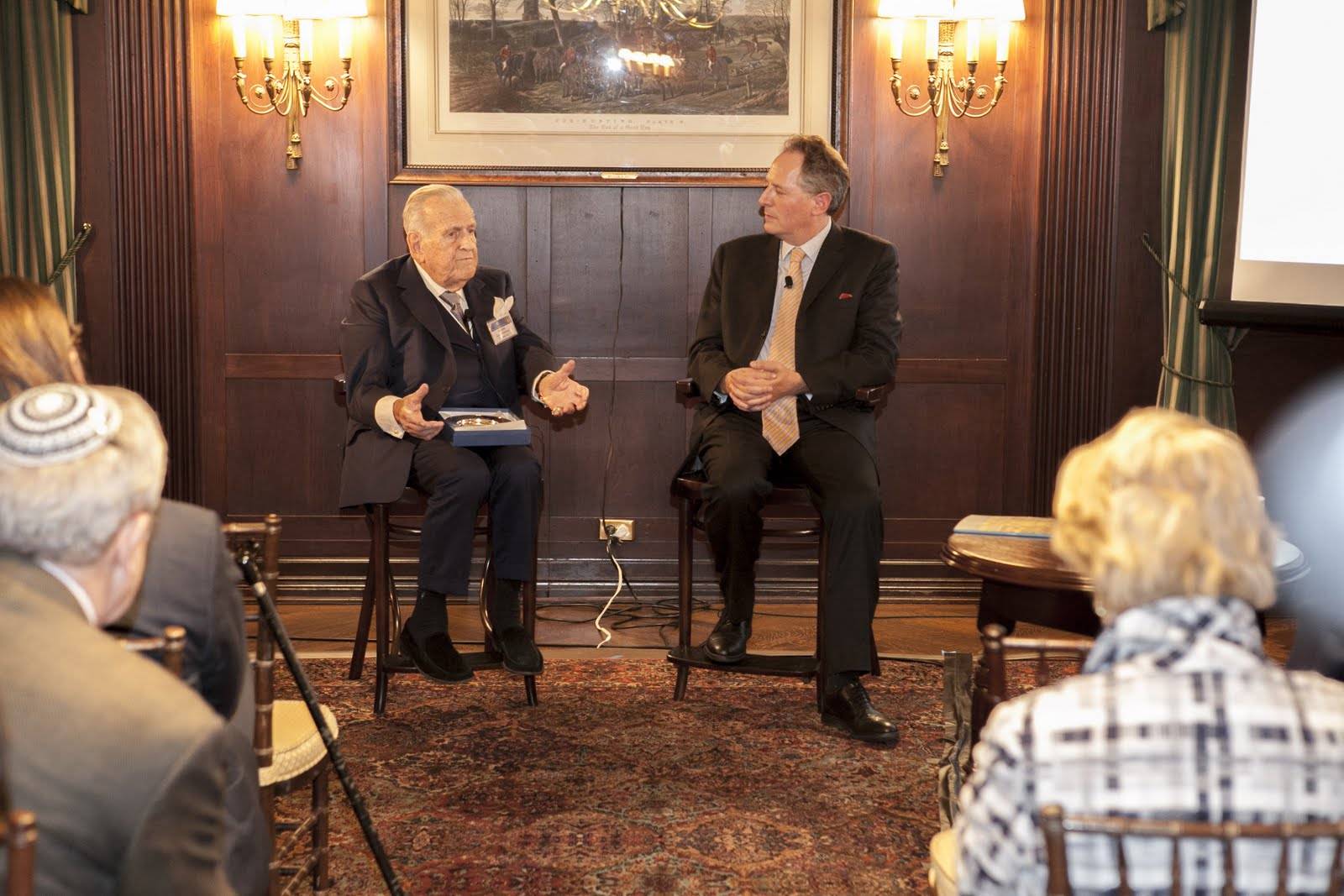American Worthies
23 November 2015

This year’s recipient of the American Worthies Award was Sir John Richardson (Chatham 39). Sir John is arguably Britain’s most distinguished Art Historian and his achievements have been recognised in the award of France’s Ordre des Arts et des Lettres (an honour also conferred on Bob Dylan and TS Eliot) as well as his appointment in 2012 as Knight Commander of the Order of the British Empire. His multi-volume biography of Picasso has been awarded the prestigious Whitbread Prize and we eagerly await the publication next year of the fourth volume of this heroic undertaking which will take us to the liberation of Paris in 1944.
Sir John is only the second recipient of the American Worthies Award (the first was Old Stoic Peter Sichel who worked for American Intelligence during the Second World War, ran the CIA in Germany at the height of the Cold War and then launched Blue Nun on an unsuspecting world in the 1970s). John very graciously agreed to be interviewed before he was presented with the Award by Brian Hecht, Chairman of the American Friends of Stowe at the annual AFS party in New York on 22 October. From the outset it became clear that John still has enormous affection for Stowe and he spoke fondly of his time in the Art School where he was inspired by Robin and Dodie Watt, the Canadian art teachers who actively encouraged Stoics to take an interest in Cubism and Surrealism, championing artists like Picasso, Léger and Braque. John described poring over the journals of contemporary art and Stowe must have been one of the very first schools to champion the international avant-garde. He also paid tribute to the genius of JF Roxburgh who promised that no Stoic would leave the School without acquiring a lasting appreciation of beauty – something which John clearly took to heart as he dedicated his life to collecting, studying and writing about art. John told us of a time when Stowe’s Temples and follies were crumbling and neglected, hidden by trees and shrubs, waiting to be discovered by an adventurous schoolboy with an interest in art and architecture.
From Stowe, John enrolled at the Slade School of Fine Art which had been evacuated to Oxford during the Blitz. A short spell in the Irish Guards ended when John contracted rheumatic fever and was invalided out of the army. He spent the rest of the war working as an industrial designer in London where he befriended future luminaries such as Francis Bacon and Lucian Freud. As the interview went on, it became clear that John Richardson has been acquainted with everyone of importance in the British, French and American art scene during the second half of the 20th Century. In 1949 he went to live in Provence with the Art Historian and collector, Douglas Cooper, and we were regaled with amusing stories of their friendship with Picasso, Léger and de Staël. Together, Richardson and Cooper collected artists whom the Tate Gallery, under the directorship of John Rothenstein, obtusely ignored and we were given an insight into the machinations which led to Cooper’s great collection being broken up and sold instead of adorning the walls of The Tate. The audience will long remember the colourful anecdotes of Cooper booing the Queen at the Coronation, but admiring the escort of Bengal Lancers, as well as John’s unique insights into Guernica which he has decoded as being strongly influenced by Picasso’s interest in the Roman cult of Mithras.
As the acknowledged expert on Picasso, we eagerly awaited John’s verdict on the new exhibition of Picasso’s sculptures currently showing in New York’s Museum of Modern Art. We were treated to a rapid stream of invective as John dismissed the stultifying banality of MoMA’s curatorial choices, lighting and display. It was vintage Richardson and reminded everyone in the room of why even at the age of 92, Sir John Richardson remains one of the most influential and entertaining Art Historians in the world.
Dr Anthony Wallersteiner, Headmaster